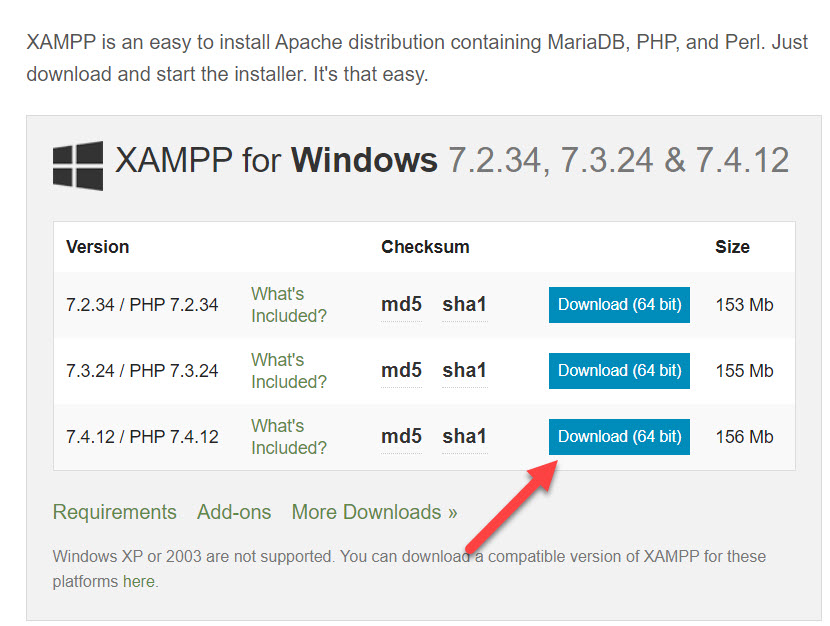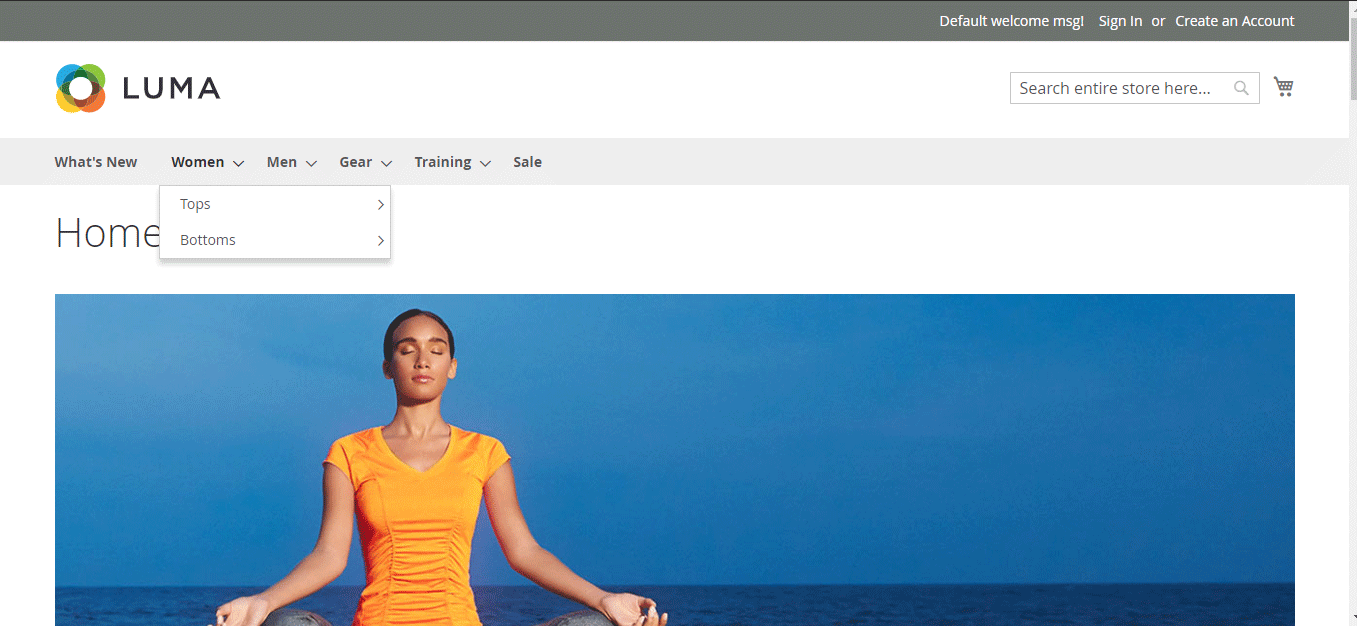


As a result you should have a new folder called “magentoâ€: c:xampphtdocsmagento.Extract contents of magento-1.9.1.0.zip into this folder: c:xampphtdocs.
#Xampp install magento localhost download#
Download Magento CE from here (recommended.Once you have XAMPP installed and running, follow these steps: Download When you install XAMPP – make sure to install “phpmyadminâ€. And if you have any issues while installing Magento 2, you can go ahead and ask me via the comments section.This step-by-step tutorial will help you install Magento quickly and easily on localhost. Just focus on building an awesome Magento 2 store and Cloudways will take care of the rest. Once you are ready to take your store live, you don’t need to worry about performance because Cloudways Managed Magento Hosting is here for increasing your sales and taking away the server-side management hassles. So that’s how you can install Magento 2.4.1 on the localhost using the Composer. If you couldn’t log in to the Magento Admin Panel and encounter an authentication error, simply run the following command in the Composer: php bin/magento module:disable Magento_TwoFactorAuth Refer to the following image for the point where you need to insert the line: $realPath = str_replace('\\', '/', $this->fileDriver->getRealPath($path)) In the function isPathInDirectories, add a line. Here are some of the most common ones, along with a solution.Īll you have to do is go to the directory path …\vendor\magento\framework\View\Element\Template\File\Validator.php There is a chance that you might encounter an issue during the Magento 2 installation process. Problems During Magento 2.4.1 Installation You can now start making your preferred customizations and launch a fully functional ecommerce store right on the local machine. Now hit the URL (usually, localhost/magento2) or the base URL that you set earlier for the installation.Ĭongratulations! You have now successfully installed Magento 2.4.1 on your localhost. Php bin/magento setup:static-content:deploy -f If you hit the URL, you might won’t see the updated content with sample data on the storefront.įor that, you need to run the following commands.
#Xampp install magento localhost password#
Please note: Assign the base URL as per your path, note down the admin username and password and do not the Elasticsearch port.īe patient as it could some time to install all instances and required modules for setting up Magento 2.4.1.Īfter the installation, you will end up with these results. In the command prompt, execute the command: php bin/magento setup:install -base-url=" -db-host="localhost" -db-name="dbmagento241" -db-user="root" -admin-firstname="admin" -admin-lastname="admin" -admin-email=" " -admin-user="admin" -admin-password="admin123" -language="en_US" -currency="USD" -timezone="America/Chicago" -use-rewrites="1" -backend-frontname="admin" -search-engine=elasticsearch7 -elasticsearch-host="localhost" -elasticsearch-port=9200 This will open a command prompt on the location. Hold the Shift key and right-click, and select “Open command window here”. After this, go to the Magento 2 folder (inside the htdocs folder). IMPORTANT Remember the name of the database you would create.įirst, unzip the downloaded Magento 2.4.1 file to xampp/htdocs/. Type local:9200 in the browser and you will get the details of the installed Elasticsearch extension.Īccess localhost/phpmyadmin, create a database. You can also check the availability of Elasticsearch on port:9200. Once installed, run the bash file as an administrator. Next, restart the XAMPP control panel.īook a Personalized Cloudways Product Demo With One of Our Expert Install Elasticsearch for Magento 2.4.1Įlasticsearch is a highly recommended extension for Magento 2.4.1.ĭownload and install the latest version of Elasticsearch from here. To enable the extension, edit php.ini and uncomment the line “extension=php_intl.dll” and just remove the semicolon “ ” from the starting of the line. Launch the Command Prompt and run the Composer command to verify that it has been installed without any issues.Īfter installing the composer, you must enable the extension (php_intl.dll) in the php.ini file. Now click Install to initiate the final step.

This will install the latest version and set up your path so that you can “call” Composer from any directory.Ĭlick Next, and browse to the path of the PHP in the XAMPP folder. Extract Magento 2.4.1 files to your xampp/htdocs folder.ĭownload and run Composer-Setup.exe.Open the XAMPP server and start Apache and MySQL applications.I will cover the entire process of installing Magento 2 on localhost so that you would not face any issues in replicating the process:


 0 kommentar(er)
0 kommentar(er)
